During the National Revival, enterprising goldsmiths from Bulgaria made jewellery within the Ottoman Empire, traded far beyond its bounds, and though they lived a life of affluence, never forgot that the Bulgarian nation had one mission – to earn their freedom. That is why the craftsmen’s class was actively involved in the fight for a Bulgarian school and for independence of the church as important steps towards the country’s liberation.
An exhibition mounted at the Ethnographic Museum in Plovdiv displays the magnificent handiwork of two crafts that flourished in the Bulgarian lands – that of the goldsmiths and of the brass- and coppersmiths.
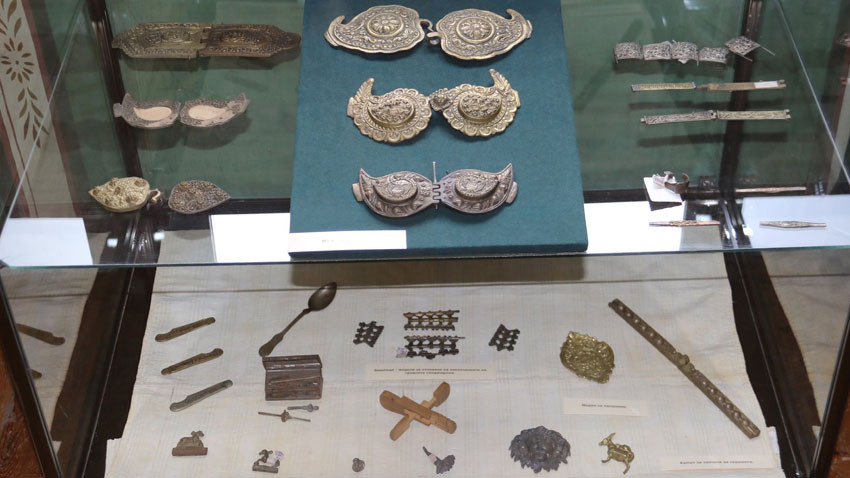
“The goldsmiths were more than master craftsmen, they were true artists,” says Grozdelina Georgieva, curator of the exhibition entitled “Bracelets clinking under the pillow.” “Goldsmiths were entrusted with the task of making granulated filigree, enamel and mother-of-pearl jewellery, the church commissioned them to make all of the expensive items it used in its rituals. That is why we are showing unique items used by the church – like collection plates, gold and silver plated communion cups, or repousse relief cups.”

The exhibition shows magnificent jewellery and luxury items, but it also reveals the manufacturing process and the instruments the one-time master craftsmen used, some of which are still in use by the most ardent followers of the ways of the goldsmiths of old. And though some have remained true to tradition, there are things that have gradually been falling into oblivion, like the drawing out of a filigree thread, an art requiring incredible skills and patience.
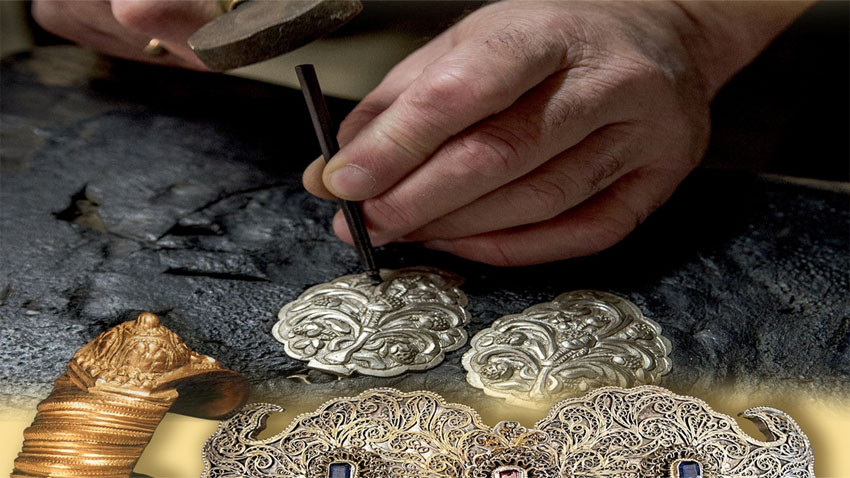
“By the 1780s the crafts were blossoming,” Grozdelina Georgieva says. “In 1773, Sultan Mustafa III issued a firman allowing the subjugated peoples to have their own craftsmen, and, as a result craft production thrived. In fact, that was the acme of the Bulgarian National Revival, because people started trvaelling, accumulating wealth, their eyes opened wide, and it was this affluent class that was to form the backbone of the nation. Earlier there had been well-to-do individuals, but it was only at this time that a powerful middle class of tradesmen and craftsmen was formed. These master craftsmen worked for the empire, and travelling beyond its borders, established contacts and trade ties. And in the time of the National Revival, these were invaluable.”

One of the female ornaments a bride simply had to wear around her waist on her wedding day was a clasp called pafta. Before the time Bulgaria lost its independence, soldiers also wore paftas on their belts, but as the country was conquered, the army was disbanded, and the clasp migrated to the female waist. Rectangular and round pafta designs were a common occurrence in the Bulgarian lands, but leaf-shaped clasps are known to have come from the Orient, and are associated with eyes that ward off bad thoughts.
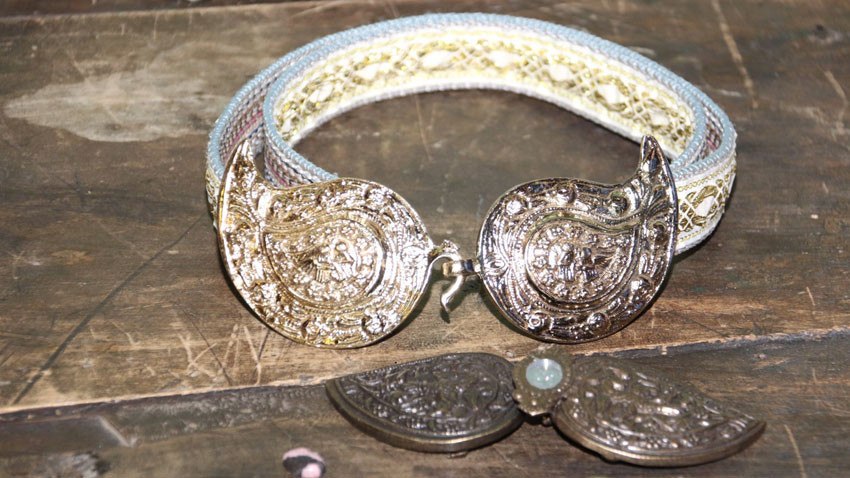
“Basically, all women’s jewellery is considered to be apotropaic - having the power to ward off evil influences or bad luck,” explains Grozdelina Georgieva, giving as an example the silver headdress, called prochelnik, which conceals the bride’s eyes during the wedding ceremony, so she may be protected from evil eyes.
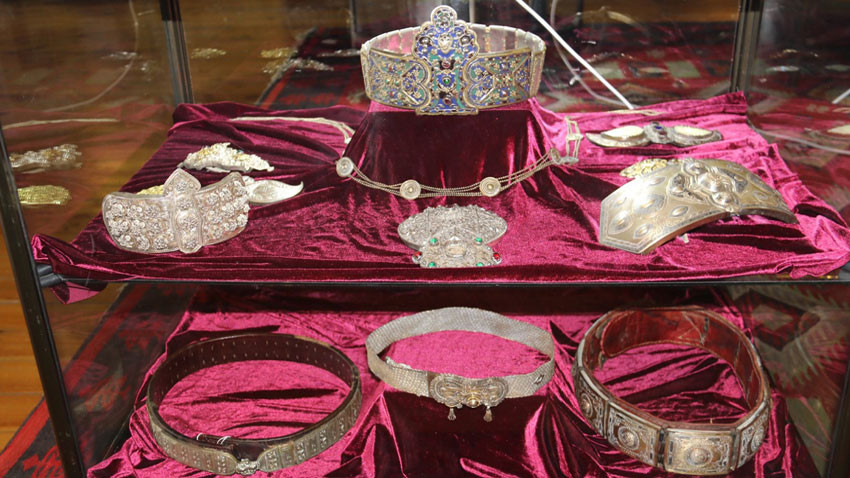
“The most ornate were the women’s adornments, because it is a wedding tradition that the boy’s side of the family shall give the bride a full set of jewellery, and the more items there are, the wealthier the home the bride shall be entering,” Grozdelina Georgieva says. “One of the most original items on display here is a necklace which visitors say looks like a latter-day “heavy metal” choker. It is so true – we are putting on display models of jewellery one would find it hard to believe are more than 100 years old.”
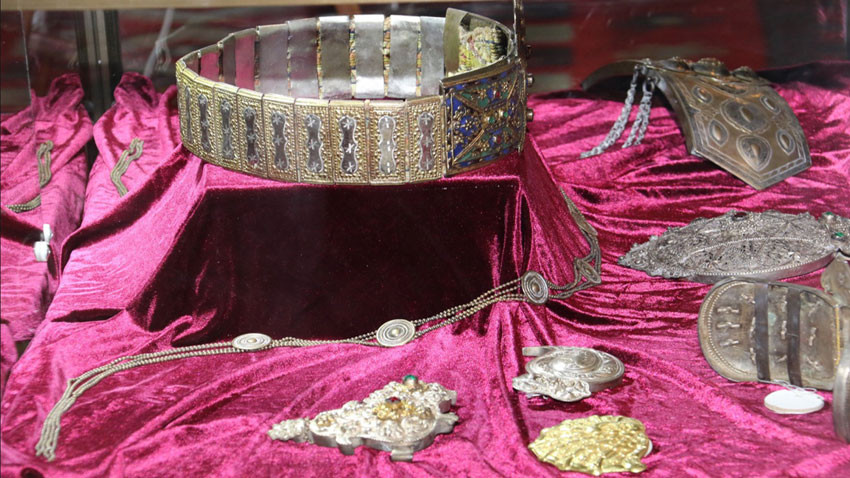
This spectacular exhibition, tracing the story of the craft of the goldsmiths of old, is on at the Ethnographic Museum in Plovdiv until 15 November.
English version: Milena Daynova
Photos: ethnograph.infoAll necessary measures have been taken to protect the exhibits of the "Ancient Thrace and the Classical World: Treasures from Bulgaria, Romania and Greece" exhibition in Los Angeles from the raging fires in the area, reported BTA. The exhibition,..
Bulgaria's Consul General in New York Angel Angelov has taken part in an online discussion organized by an educational platform on Holocaust issues and dedicated to the saving of Bulgarian Jews in the Second World War, BTA reports. A special guest..
An exhibition titled "PICASSO: Graphics from the National Gallery Collection " will open at 18:00 pm this evening at Kvadrat 500 in Sofia. The National Gallery's collection includes twenty-one graphic works by Picasso, thematically connected to his..
All necessary measures have been taken to protect the exhibits of the "Ancient Thrace and the Classical World: Treasures from Bulgaria, Romania and..
An exhibition titled "PICASSO: Graphics from the National Gallery Collection " will open at 18:00 pm this evening at Kvadrat 500 in Sofia. The..
Bulgaria's Consul General in New York Angel Angelov has taken part in an online discussion organized by an educational platform on Holocaust issues and..

+359 2 9336 661
